
Hotel company Hilton (NYSE:HLT) announced better-than-expected revenue in Q3 CY2025, with sales up 8.8% year on year to $3.12 billion. Its non-GAAP profit of $2.11 per share was 3% above analysts’ consensus estimates.
Is now the time to buy Hilton? Find out by accessing our full research report, it’s free for active Edge members.
Hilton (HLT) Q3 CY2025 Highlights:
- Revenue: $3.12 billion vs analyst estimates of $3.01 billion (8.8% year-on-year growth, 3.7% beat)
- Adjusted EPS: $2.11 vs analyst estimates of $2.05 (3% beat)
- Adjusted EBITDA: $976 million vs analyst estimates of $951.4 million (31.3% margin, 2.6% beat)
- Management raised its full-year Adjusted EPS guidance to $8.02 at the midpoint, a 1.3% increase
- EBITDA guidance for the full year is $3.7 billion at the midpoint, in line with analyst expectations
- Operating Margin: 24.9%, up from 21.7% in the same quarter last year
- RevPAR: $115.16 at quarter end, down 5.1% year on year
- Market Capitalization: $62.55 billion
Company Overview
Founded in 1919, Hilton Worldwide (NYSE:HLT) is a global hospitality company with a portfolio of hotel brands.
Revenue Growth
A company’s long-term performance is an indicator of its overall quality. Any business can put up a good quarter or two, but many enduring ones grow for years. Over the last five years, Hilton grew its sales at a decent 15.2% compounded annual growth rate. Its growth was slightly above the average consumer discretionary company and shows its offerings resonate with customers.
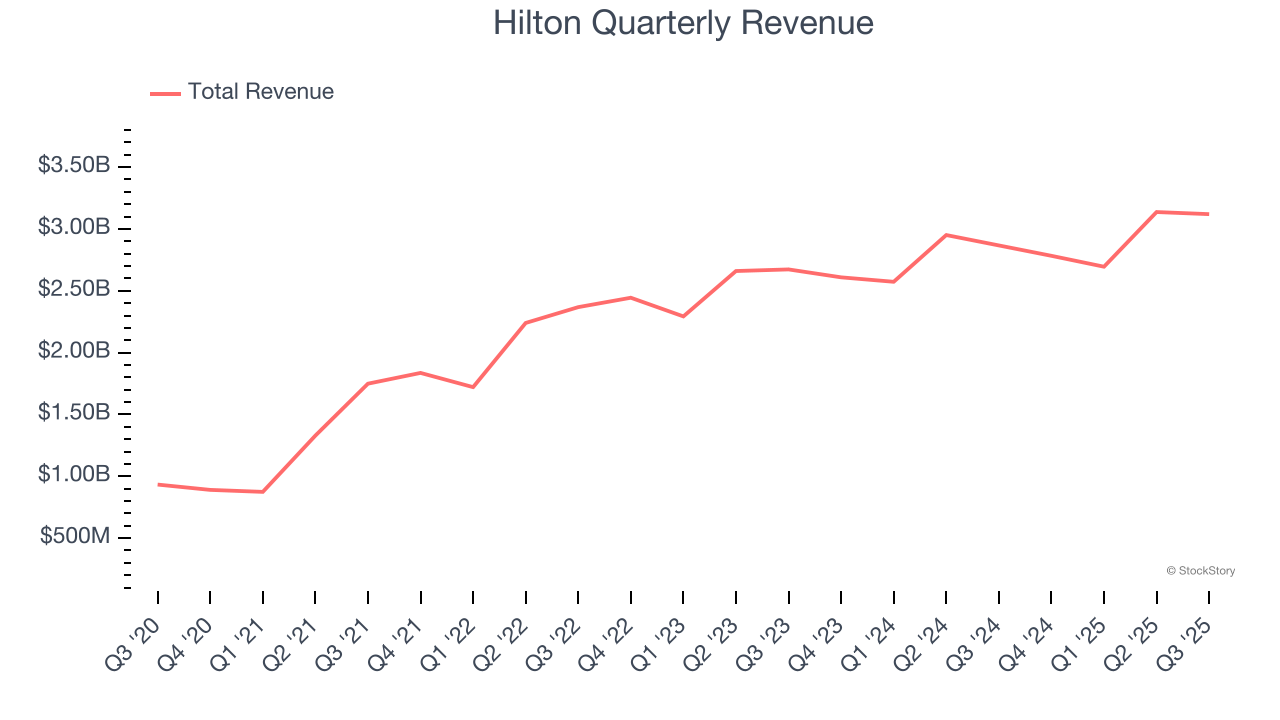
We at StockStory place the most emphasis on long-term growth, but within consumer discretionary, a stretched historical view may miss a company riding a successful new property or trend. Hilton’s recent performance shows its demand has slowed as its annualized revenue growth of 8% over the last two years was below its five-year trend. 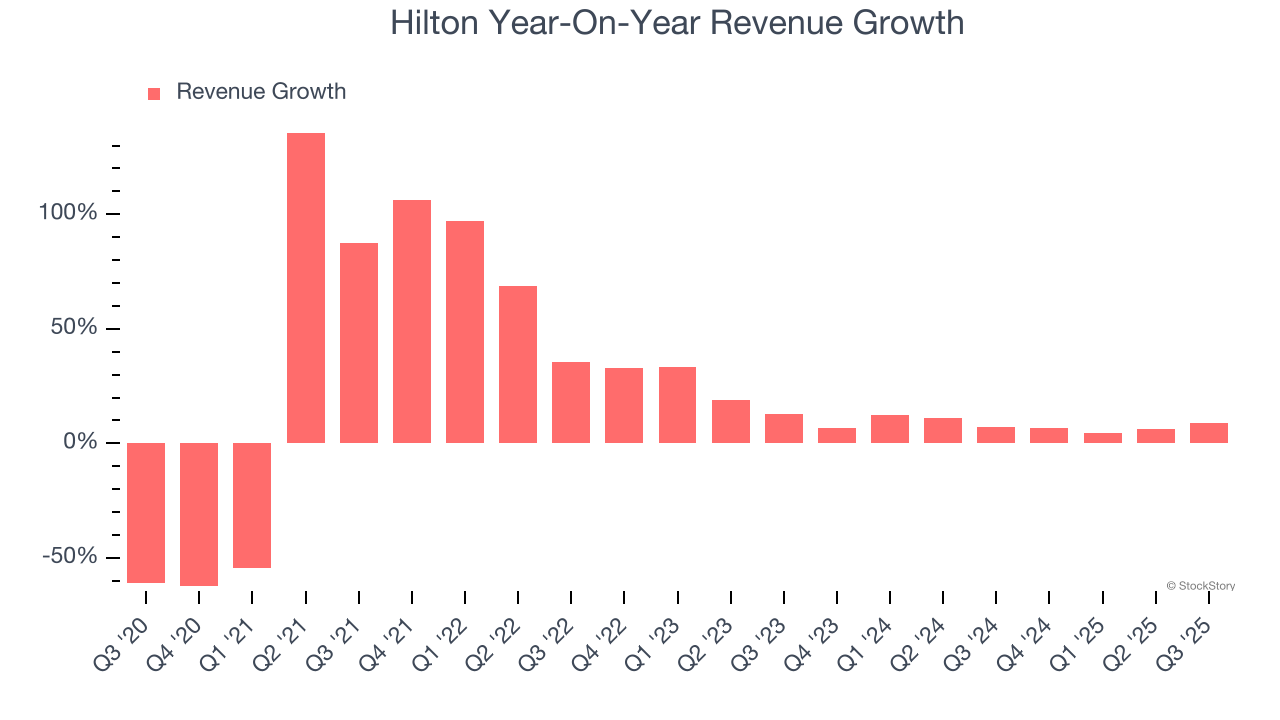
Hilton also reports revenue per available room, which clocked in at $115.16 this quarter and is a key metric accounting for daily rates and occupancy levels. Over the last two years, Hilton’s revenue per room was flat. Because this number is lower than its revenue growth, we can see its sales from other areas like restaurants, bars, and amenities outperformed its room bookings. 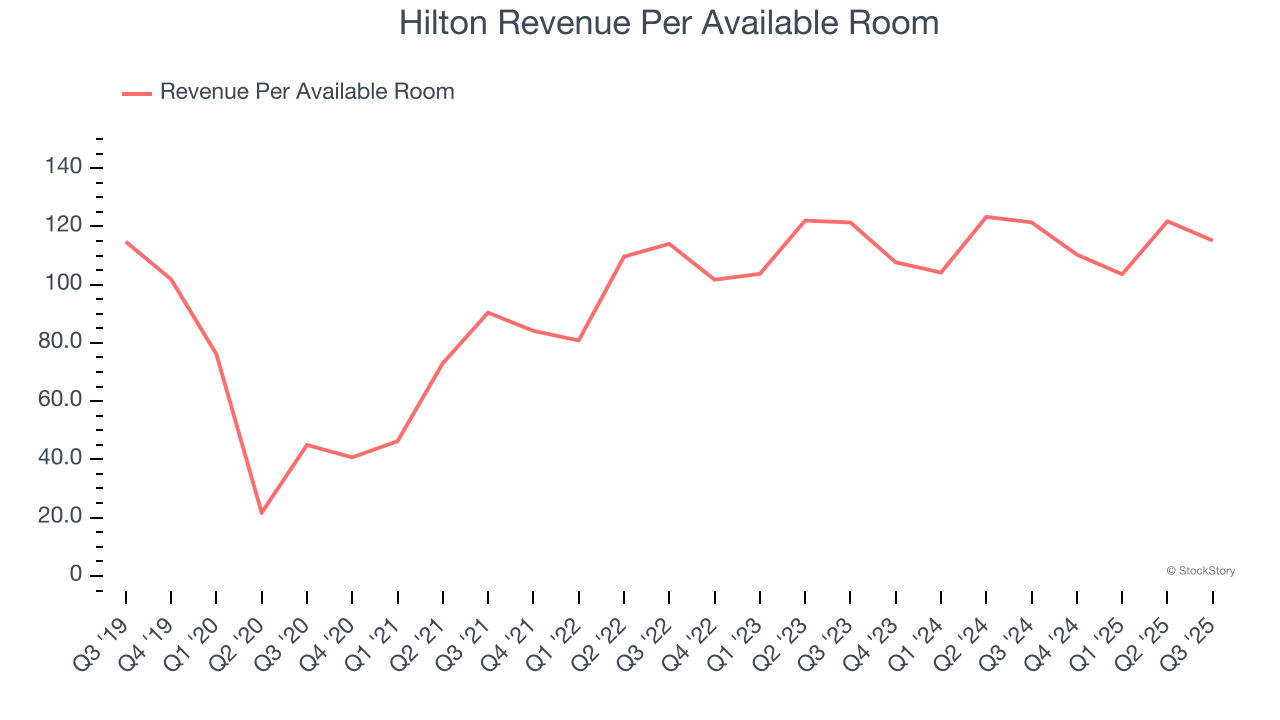
This quarter, Hilton reported year-on-year revenue growth of 8.8%, and its $3.12 billion of revenue exceeded Wall Street’s estimates by 3.7%.
Looking ahead, sell-side analysts expect revenue to grow 6.9% over the next 12 months, similar to its two-year rate. This projection is underwhelming and suggests its products and services will see some demand headwinds.
Unless you’ve been living under a rock, it should be obvious by now that generative AI is going to have a huge impact on how large corporations do business. While Nvidia and AMD are trading close to all-time highs, we prefer a lesser-known (but still profitable) stock benefiting from the rise of AI. Click here to access our free report one of our favorites growth stories.
Operating Margin
Operating margin is a key measure of profitability. Think of it as net income - the bottom line - excluding the impact of taxes and interest on debt, which are less connected to business fundamentals.
Hilton’s operating margin has risen over the last 12 months and averaged 21.4% over the last two years. On top of that, its profitability was top-notch for a consumer discretionary business, showing it’s an well-run company with an efficient cost structure.
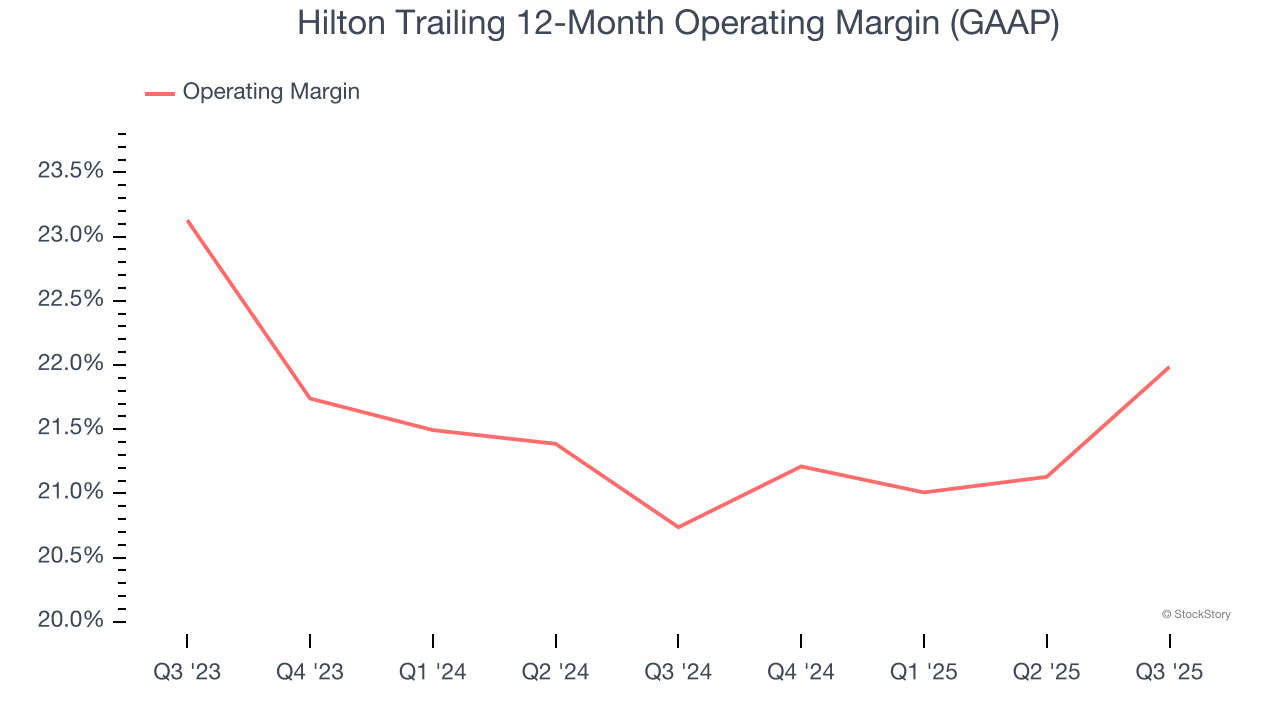
This quarter, Hilton generated an operating margin profit margin of 24.9%, up 3.2 percentage points year on year. This increase was a welcome development and shows it was more efficient.
Earnings Per Share
Revenue trends explain a company’s historical growth, but the long-term change in earnings per share (EPS) points to the profitability of that growth – for example, a company could inflate its sales through excessive spending on advertising and promotions.
Hilton’s EPS grew at an astounding 45.6% compounded annual growth rate over the last five years, higher than its 15.2% annualized revenue growth. This tells us the company became more profitable on a per-share basis as it expanded.
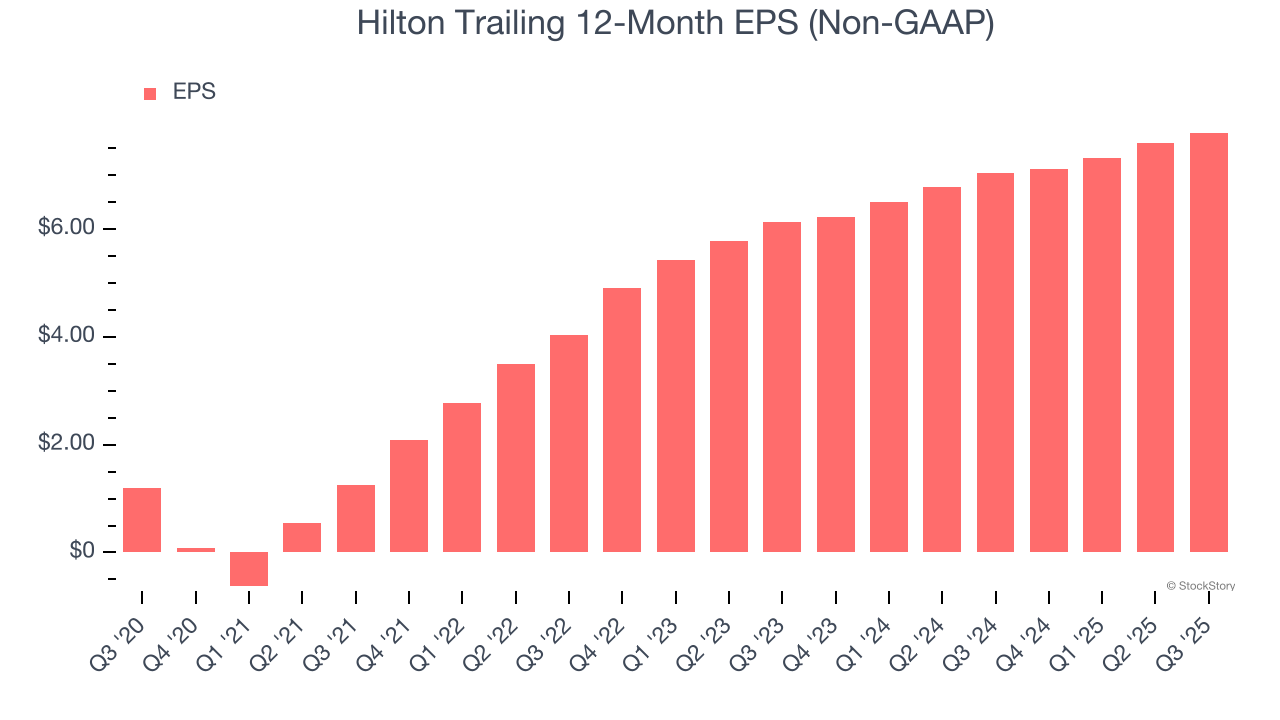
In Q3, Hilton reported adjusted EPS of $2.11, up from $1.92 in the same quarter last year. This print beat analysts’ estimates by 3%. Over the next 12 months, Wall Street expects Hilton’s full-year EPS of $7.79 to grow 12.1%.
Key Takeaways from Hilton’s Q3 Results
It was encouraging to see Hilton beat analysts’ revenue expectations this quarter. We were also happy its EBITDA outperformed Wall Street’s estimates. Overall, this print had some key positives. The stock traded up 3.1% to $274.50 immediately following the results.
So should you invest in Hilton right now? What happened in the latest quarter matters, but not as much as longer-term business quality and valuation, when deciding whether to invest in this stock. We cover that in our actionable full research report which you can read here, it’s free for active Edge members.
